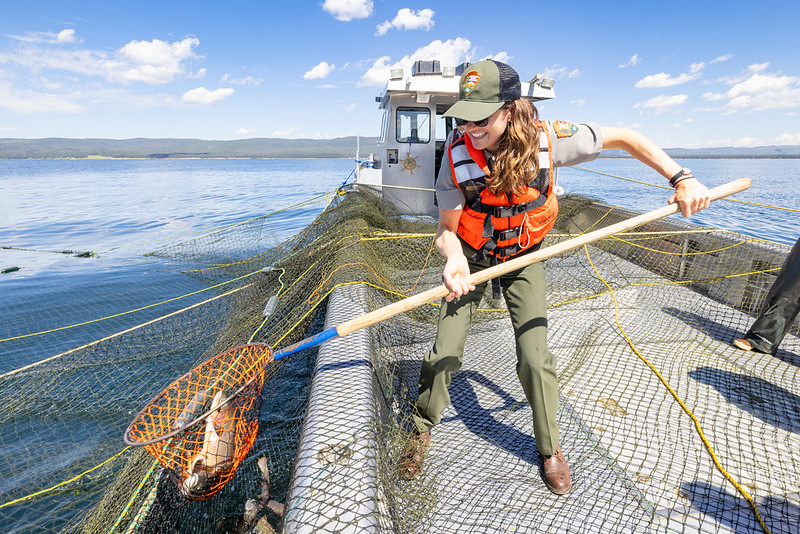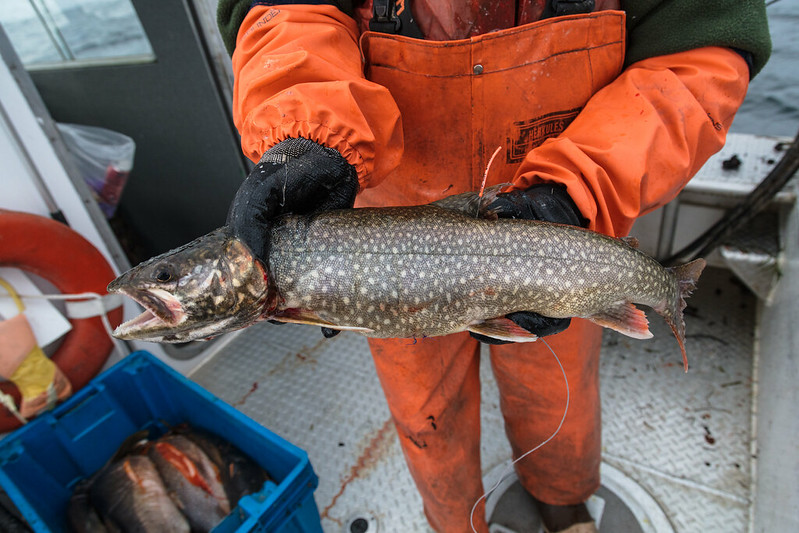Monday October 21, 2024

Yellowstone National Park is a symbol of wild beauty, renowned for its breathtaking landscapes and rich biodiversity. Yet, beneath the surface of its pristine waters lies a silent struggle for survival. Yellowstone Lake is home to the largest inland population of Yellowstone Cutthroat Trout (Oncorhynchus clarkii bouvieri; herein referred to as Cutthrout Trout), a species that once thrived but has been in steady decline throughout the 21st century. This decline is largely due to the predatory threat of invasive Lake Trout (Salvelinus namaycush), first discovered in the lake in 1994. The mature Cutthroat Trout, which migrates between the rivers, lakes, and tributaries of Yellowstone, now face not only this invasive predator but also other adversities, including disease outbreaks such as whirling disease, caused by the parasite, Myxbolus cerebralis, and the unpredictable effects of climate change. These challenges have left the once abundant Yellowstone Cutthroat Trout population at risk, spurring a long-term effort by conservationists to protect this iconic species from further decline.

Since 1995, the National Park Service has been suppressing Lake Trout populations through a large-scale gill netting and removal program to promote Yellowstone Cutthroat Trout Recovery in Yellowstone Lake. Supporting evidence suggests that these efforts have reduced the biomass of adult Lake Trout, aiding in the recovery of Cutthroat Trout populations by more than 79%. Unfortunately, the gill netting method does not put a dent in the number of offspring a spawning pair of Lake Trout can produce in a year. Managers have been exploring innovative methods to target the eggs and smaller-sized juvenile Lake Trout to further reduce the pressure on the beloved Cutthroat Trout population in Yellowstone.
As a top predator with highly adaptable traits, Lake Trout have a significant impact on the ecosystems they invade and can easily outcompete native species. This is why considerable time, money, and resources have been invested in eradicating them, especially in delicate ecosystems like Yellowstone. While the gill netting program has proven effective, it is also costly, requiring over $2 million dollars annually. To improve efficiency, researchers have tested the use of telemetry to assist in identifying Lake Trout aggregations. They employed mobile acoustic tracking surveys to locate tagged Lake Trout, followed by the deployment of large-mesh gill nets in these areas. This study revealed that telemetry is an effective strategy for suppressing Lake Trout, marking a small victory for Cutthroat Trout conservation.

Further efforts to increase effective Lake Trout suppression have focused on targeting their embryos. A 2020 study evaluated the effects of sediment and carcass deposition on Lake Trout embryos, finding a 100% mortality rate below the substrate surface when spawning sites were exposed to ground carcass and substrate materials. This high mortality rate was likely due to the hypoxic conditions induced by the sediment treatment during a prolonged treatment period over winter.
Another method tested involved the use of organic pellets made up of soy and wheat, which were placed on known spawning sites to suffocate the embryos. These pellets decomposed over several weeks, reducing the dissolved oxygen to lethal concentrations for the embryos. Although the pellets dissipated after 39 days, their success in reducing larval survival contributed to the prevention of Lake Trout population growth for the years following. It is important to keep in mind that Cutthroat Trout exclusively spawn in running water so these experiments in Yellowstone Lake do not have an impact on Cutthroat trout reproduction or recruitment.

The battle to save the Yellowstone Cutthroat Trout is a complex and ongoing endeavor, one that intertwines innovation, persistence, and ecological insight. The efforts to suppress the invasive Lake Trout have significantly reduced their populations, marking a critical step forward. However, the resilience of Lake Trout has inspired the exploration of new strategies. These experimental approaches offer promising results in reducing Lake Trout recruitment, further supporting native Cutthroat Trout populations. By continuing to refine these methods and adapt to new challenges, researchers and managers are working towards a more balanced and sustainable future for Yellowstone’s waters – ensuring that future generations can witness the resilience and beauty of Yellowstone Cutthroat Trout in its natural habitat.
Header Image Caption: Spawning Cutthroat Trout in Yellowstone National Park.
This post was featured in our weekly e-newsletter, the Fish Report. You can subscribe to the Fish Report here.
